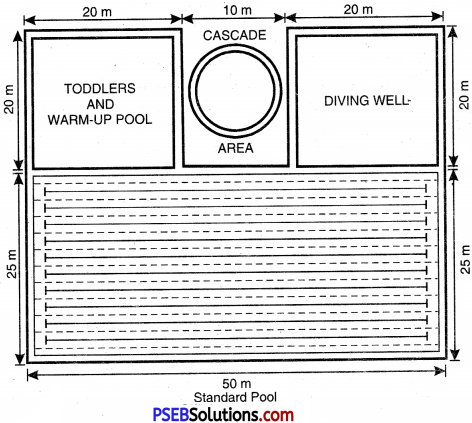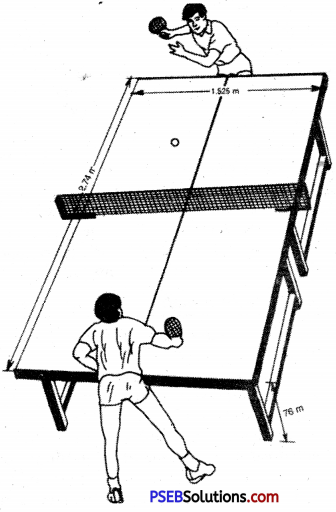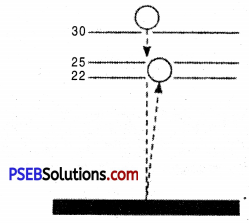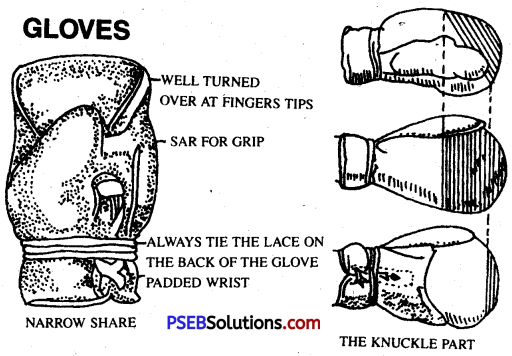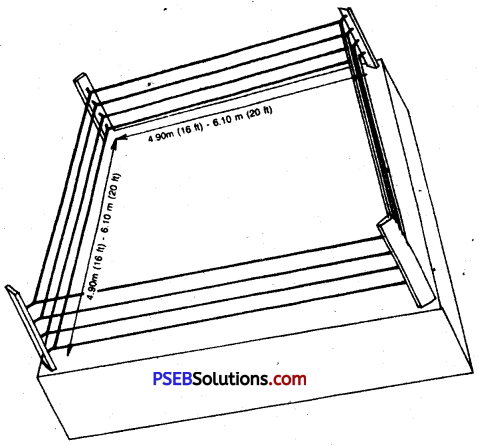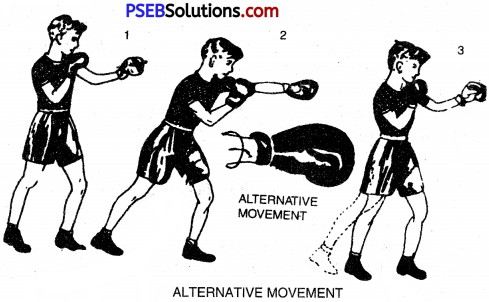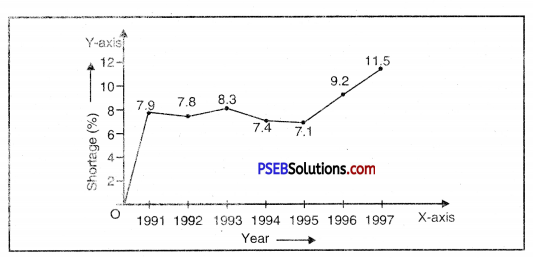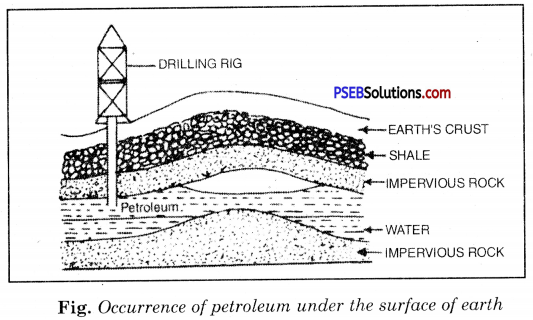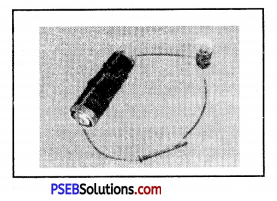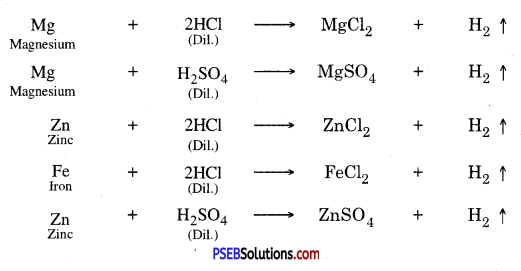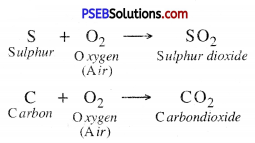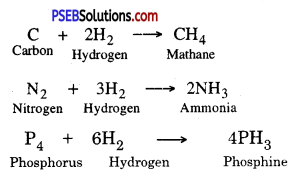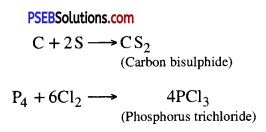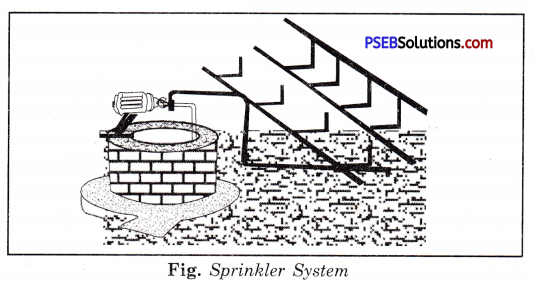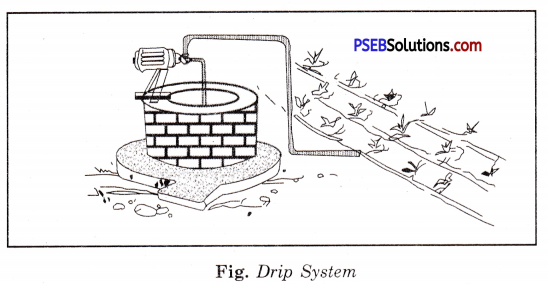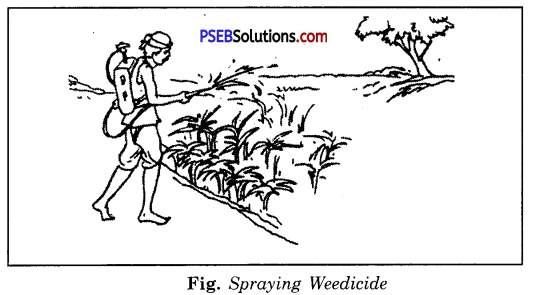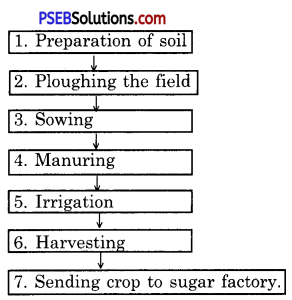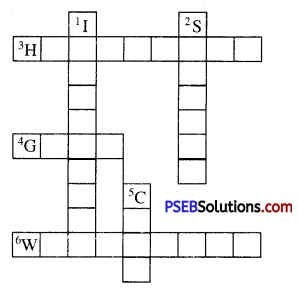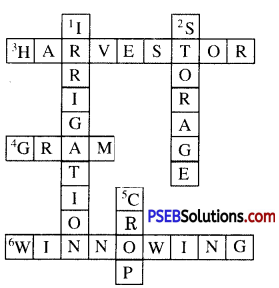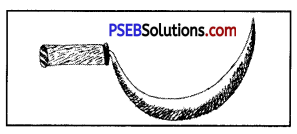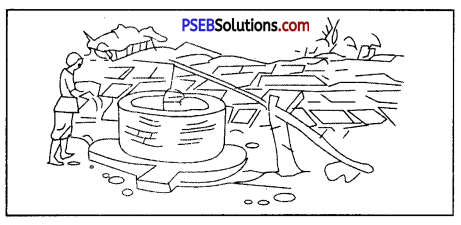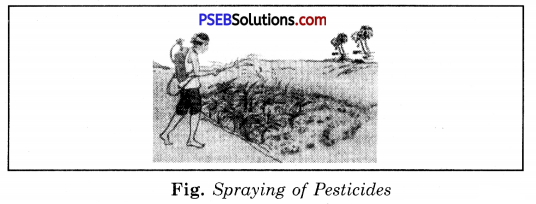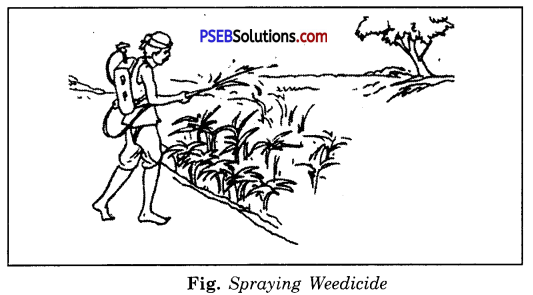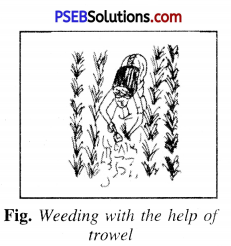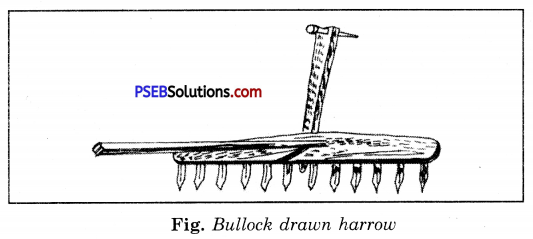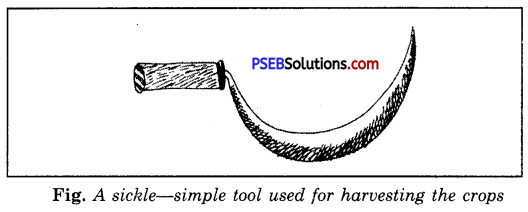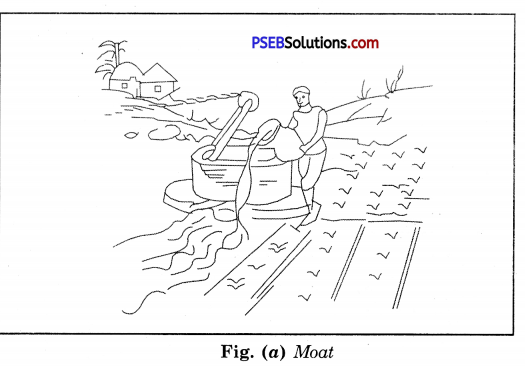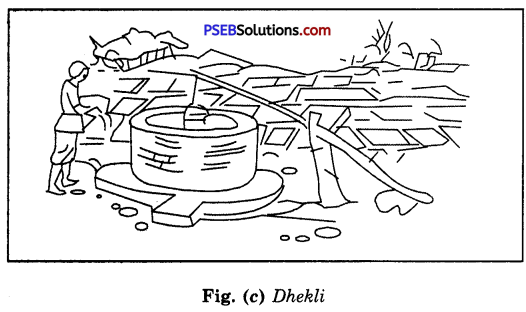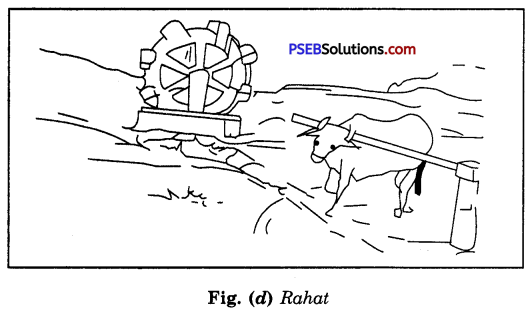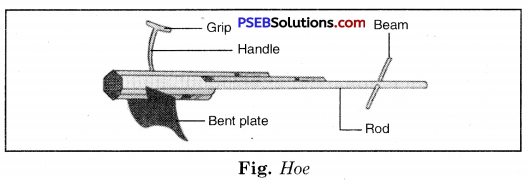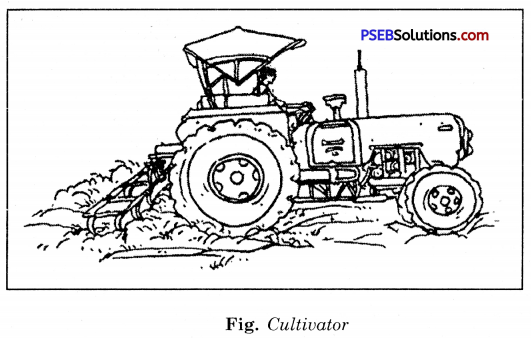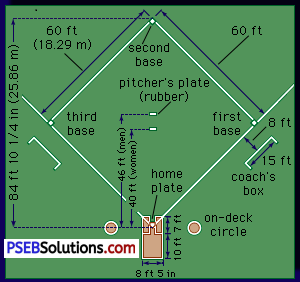Punjab State Board PSEB 12th Class Sociology Important Questions Chapter 5 Class Inequalities Important Questions and Answers.
PSEB 12th Class Sociology Important Questions Chapter 5 Class Inequalities
Multiple Choice Questions:
1. Which of these is not a feature of class?
(a) Achieved status
(b) Openness
(c) Based on birth
(d) High-low status of classes.
Answer:
(c) Based on birth
2. Which of these is the feature of class?
(a) Feeling of high-low
(b) Social Mobility
(c) Development of sub-classes
(d) All of these
Answer:
(d) All of these
3. Name the process in which people get specific social status on different bases:
(a) Caste system
(b) Class system
(c) Community development
(d) Social system
Answer:
(b) Class system

4. What is the impact of class system on society?
(а) Caste system is weakening
(b) People of lower castes moving in upward direction
(c) People get chance to show their ability
(d) All of these
Answer:
(d) All of these
5. What is the difference between caste and class?
(a) Caste is based on birth but class is based on ability
(b) One can change his class but not caste
(c) There are many restrictions in caste but not in class
(d) All of these
Answer:
(d) All of these
6. Who gave the theory of class struggle?
(a) Karl Marx
(b) Max Weber
(c) Right
(d) Warner
Answer:
(a) Karl Marx
Fill in the Blanks:
1. Membership of class is based on individual ……………..
Answer:
ability
2. ……………… gave the theory of class struggle.
Answer:
Karl Marx
3. According to Marx, there are ………………. classes in the world.
Answer:
two
4. …………………. class is known as Bourgouisie.
Answer:
Capitalist
5. ……………… class is known as Proletariat.
Answer:
Labour

True/False:
1. Class consciousness exists in all the classes.
Answer:
True
2. Status in class is achieved.
Answer:
True
3. Income, occupation, wealth and education determine class of an individual.
Answer:
True
4. According to Weber, wealth, power and authority are the bases, of inequality.
Answer:
True
5. Warner studied the class structure of America.
Answer:
True
One Word/One Line Questions Answers:
Question 1.
On what the membership of class is based?
Answer:
Membership of class is based on individual ability.
Question 2.
Presently what are the bases of class?
Answer:
Education, wealth, occupation, kinship etc.
Question 3.
Who gave the theory of class struggle?
Answer:
Karl Max.
Question 4.
On the basis of wealth, in how many classes can people be divided?
Answer:
Three classes—upper class, middle class and lower class.
Question 5.
Name the major classes existing in villages.
Answer:
In villages, we can find Landlord class, peasant class, labourer class etc.
Question 6.
What is meant by class system?
Answer:
When many classes are formed in society, on many bases, it is known as class system.

Question 7.
What type of group is class?
Answer:
Class is an open group whose membership is based on individual ability.
Question 8.
What type of relations are there in class?
Answer:
Formal, temporary and limited relations are there in class.
Question 9.
According to Marx, what is the base of class?
Answer:
According to Marx, the base of class is economic or wealth.
Question 10.
According to Marx, how many types of classes are there in every society?
Answer:
According to Marx, there are two types of classes in every society.
Question 11.
According to Weber, what are the bases of inequality?
Answer:
According to Weber, wealth, power and position are the bases of inequality.
Question 12. What is Bourgeoisie?
Answer:
The class which owns all the means of production is known as Bourgeoisie.
Question 13.
What is Proletariat?
Answer:
That class which does not own any means of production and has nothing to sell except labour is known as Proletariat.
Question 14.
What is classless society?
Answer:
That society in which there is no class in known as classless society.
Question 15.
Give one difference between caste and class.
Answer:
Caste is based on birth but class is based on individual ability.
Very Short Answer Type Questions:
Question 1.
What do you mean by class?
Answer:
In society, different persons get specific social status and the group with a specific social status is -known as class. Members of each class are conscious about their status and they never let someone to enter another member in it very easily.
Question 2. Give two features of class.
Answer:
- Members of each class have same social status such as members of rich class get high status in society.
- Classes are formed on different bases such as education, occupation, wealth, kinship, politics, power etc.
Question 3.
Give any three impacts of class systepi.
Answer:
- With class system, the ties of casts system.have loosened up.
- With class system, people of lower castes have reached high positions in society.
- One gets a chance to show his individual ability in class system.
Question 4.
What is social mobility?
Answer:
There are many classes in society in which one needs to achieve his status. When one achieves his status, his class changes automatically. This process of moving from one class to another is known as social mobility.

Short Answer Type Questions:
Question 1.
Meaning of class system.
Answer:
Class is a group of people which are equal to each other and every class has its own status in society. According to this, every member of class has some responsibilities, rights and powers. Class consciousness is the main necessity of class. Person in class thinks about others as higher or lower than him.
Question 2. Two characteristics of class system.
Or
Describe characteristics of social class.
Answer:
- Class consciousness. Every class is conscious about the fact that its status or prestige is higher than the other class. It means person knows about higher, lower or equal status.
- Restricted social contracts. In class system people like to establish close contacts with the members of their own class and have very limited relations with members of other class.
Question 3.
Opefiness.
Or
Open System.
Answer:
In class system, person can change his position on the basis of his individual ability. It means that he can become rich from poor with great abilities and can become poor from rich with no ability. Meaning of openness is that every one will get equal opportunities to move in higher class. He can use his individual abilities for this.
Question 4.
Determinants of social class given by Bierstdt.
Answer:
- Property, money and income.
- Blood relation group of family.
- Place of living, religion, education, occupation and time of living.
Question 5.
Wealth and income—Determinants of social class.
Answer:
Persons need money to become members of higher class in society. But person cannot achieve higher status himself but his next generation will definitely get higher status in society. With income also person gets higher status in society. But here one thing is important that what is the source of income of person.
Question 6.
Status Symbol.
Answer:
In modern society, status symbols are very important for the determination of status of person. For example T.V., telephone, car, bunglow etc. determine the class status of a person. Except this clothes and jewellery of a person are also related with this.
Question 7.
Religion-Determinant of class system.
Answer:
Religion was of great importance in ancient Indian society. Person was getting status according to this. Even respect to a person was given on this basis. But in modern society, this is not the determinant of social class.

Question 8.
Differences in caste and class.
Answer:
- Membership in caste system is based upon birth and membership in class system is based on capabilities of a person.
- Occupation of a person is determined by birth. In class system, person is free to adopt any occupation of his liking.
- Membership of caste is ascribed but membership of class is achieved.
- Caste is a closed system but class is an open system.
- There are many restrictions in caste system but there is no restriction in class system.
Question 9.
Bases of Division of Class.
Answer:
- Family and kinship
- Property income and wealth
- Occupation
- Direction of place of living
- Education
Question 10.
Class-base of open stratification.
Answer:
Person in class system enters from one class to another class on the basis of his individual abilities. It means that he can change his class. He has the complete freedom to change his class. Individual abilities are considered as more important than the caste. That is why class is the base of open stratification.
Question 11.
Caste-Base of closed stratification.
Answer:
Membership of person, in caste system is related with his birth. He becomes a prisoner of that caste in which he was born. Even he cannot use his abilities completely. He neither has the independence to do any work nor he can establish relations with other castes. If he breaks the rule of caste, then caste throws him out of his caste. That is why caste is considered as the base of closed stratification.
Question 12.
On which bases can we differentiate between caste and class?
Answer:
One can differentiate between caste and class on following bases:
- On the basis of occupation.
- On the basis of membership.
- On the basis of birth.
- On the basis of restrictions
- On the basis of system.
Question 13.
Differentiate between caste and class on the basis of birth.
Answer:
Membership of a person in caste system is.based upon birth. Person is related with that caste for the whole life in which he was born. For example, a person, who was born in Kshatriya caste will remain Kshatriya for the whole life and he cannot change his membership.
Membership of a person in class system is based upon income, education, occupation, ability etc. Person can change his membership according to his wish. A person can relate himself to the higher caste with hard work. Membership of class is based upon ability. If the person does have ability and he neyer does any work then he can go from higher caste to lower caste. But if he does his work then he can change his position from lower caste to higher caste. In this way caste is based upon birth but class is based upon action.

Question 14.
Differentiate between caste and class on the basis of occupation.
Answer:
In the caste system occupation was determined by the birth of the person. It means that occupations were related with different castes. Person had to adopt the occupation of the caste in which he was born. He cannot change his occupation for his whole life. In this way he had to adopt the occupation of his caste even against his wish. Scope of selection of occupation in class system is very wide. It is the wish of the person to dhoose the occupation. He adopts that occupation in which either he is expert or which is more profitable. He can change his occupation at any time. In this way the selection of occupation depends upon the ability of the person.
Question 15.
Differentiate between caste and class on the basis of membership.
Answer:
Status of person in caste system is related with his caste. It means status is not achieved by him but is related with his birth. That is why the word ascribed is used for his status and that’s why stability was there in caste system. Status of person was determined by the status of the family. Status of person in class system is achieved. It means he has to achieve his position in society. That is why the person is hard working right from the start. Person can get higher or lower status in society with his ability. Birth is of no importance. Person’s ability and hard work are important in changing his position.
Question 16.
Class is an open system but caste is a closed system. Clarify.
Answer:
Caste is a closed system but class is an open system. Caste system is a close system of stratification because person has to live in its restrictions for the whole life. He can neither change his caste nor his occupation. Class system is an open group of stratification. Person has every type of independence in it. He can move forward in any area with hard work. He gets enough chances to change his position from lower to higher. Class is open for everyone. Person can become member of any class according to his ability, property and hardwork and can change his class many times in his life.
Question 17.
What is included in the interface of caste and class?
Answer:
Following things are included in the interface of caste and class:
- Caste is changing’into class.
- Caste is not changing into class but is restrenghtening.
Question 18.
Is caste changing?
Answer:
Many scholars are of the view that caste is changing. Now importance is given to wealth instead of caste. Policy of reservation in jobs for backward classes is being used by government. Now person can adopt any occupation of his choice. Inter-caste marriages are taking place. Many changes have come in the rules of feeding. Now elections are being fought in the name of caste. Many restrictions related to caste have been removed. After looking at this we can say that the caste is changing.
Question 19.
What is the result of stratification according to Marx?
Answer:
Marx was of the view that there are two classes in society. First one is the owner of means of production and other class is not the owner of means of production. On the basis of this ownership, owner class gets higher status and non-owner class gets lower status in society. Marx has given the name of capitalist class or Bourgouise to owner class and labourer class or proletariat is non-owner class. Capitalist class always exploits the labourer class and labourer class always struggles with capitalist class to get its rights. This is the result of stratification according to Marx.
Question 20.
Which type of relations are there in different classes?
Answer:
According to Marx the mutual relations pf classes are of inter-dependence and struggle. Capitalist and labourers both depend upon each other for their existence. Labourer class has to sell its labour to earn meal. It sells its labour to capitalist and depends upon capitalist to earn its meal. Capitalist gives the rent of his labour. For this capitalist also depends upon labourers because without labourers, he can neither produce any thing nor he can accumulate wealth. But struggle also goes on with dependency because labourer always struggles with capitalist to achieve his rights.
Question 21.
Which things are important in the theory of stratification of Marx?
Answer:
- First of all two types of classes exist in society. One class has all the means of production and other doesn’t have any means of production.
- According to Marx, stratification in society is being done on the basis of right over means of production. Class with all the means of production has the higher status in society and class without means of production has lower status in society.
- Nature and form of social stratification depends upon the system of production.
- According to Marx, history of human society is the history of class struggle. Class struggle exists in all the societies in one form or the other.

Question 22.
Class Struggle.
Answer:
Karl Marx has studied two classes in each society. According to him, there exist two classes in each society. One class is the exploitive class and other class is exploited class. There always exists conflict between them which Marx calls class struggle. Exploitive class is capitalist class which has all the means of production and with the help of which it suppresses the other classes. Second class is labour class which doesn’t have any means of production. To earn bread and butter, it needs to sell its labour. This class i.e. labour class is always exploited by the first class i.e. the capitalist class because of which struggle is always there between these two groups. This struggle is given the name of class struggle by Karl Marx.
Question 23.
Means of Production.
Answer:
Means of production are those means through which money is earned to live a happy life. A person uses means of production and production talent to produce material things and all these elements collectively form the production forces. Means of production are owned by the Capitalist. He becomes more rich with these means of production and he uses these means to suppress the labourers.
Question 24.
Social Mobility.
Answer:
Society is made up of human relations. Every person in society has its social position and this position depends upon some bases. This pqsition in some societies is based on birth and in some societies, it is based on action. Some changes are going on in the society. Change on the basis of birth is not possible. For example caste is based on birth and it cannot be changed. But occupations, functions and on the basis of money class can be changed. Change by any member of the society on the basis of his social status is known as social mobility.
Question 25.
Give two definitions of Mobility.
Answer:
- According to Harton and Hunt, “Social mobility is meant by transition up or down in social status.”
- According to Fitcher, “Social mobility is movement of persons, group or category from one social position or strata to another.”
- According to Sorokin, “Mobility involves change in position that brings about new contact and stimulations. It may, therefore, be defined as special change involving new mental contact.”
Question 26.
Education-Indicator of Social Mobility.
Answer:
Education. Education is known as an important means of social mobility. It has been said that a person gets more success in life if he will get more education. Education improves the wrong functions done by his ancestors. It is believed that education should not be taken as a means of getting a job because education never goes directly towards higher mobility. Education improves the ability of a person to avail of available opportunities at that time. Education tells those ways which are necessary to adopt any occupation but it never provides the opportunities to use those ways.
Question 27.
Income-Indicator of Social Mobility.
Answer:
Income of a person is an important indicator of mobility. Income of a person plays an important role in bringing the status of a person high or low. Person with higher income will have higher status in society and the person with less income will have lower status in society. In this way, the way of income also brings popularity to a person in society. Income of a businessman will get respect in society, but the income of a prostitute and of a smuggler will be seen with great hatredness. Person changes his class, status, way of living with the increase in income and social mobility increases with this.
Long Answer Type Questions:
Question 1.
What do you mean by Class System? Write in detail.
Or
What is Class Explain its characteristics.
Answer:
The base of social stratification is class. Status of a person in class depends upon his role in class. Position of all the persons is not same in all the societies. Some type of inequality is always there in class and because of this inequality classes came into being. Especially because of westernization, industrialization, educational system, modernization etc. classes came into being in Jndia. Stratification in Western Societies is also based upon class system. Many classes also came into being in India like Teacher class, Business class, Doctor class etc.
Meaning and Definitions of Class:
Every society has been divided in classes and every class has different status in society. On the basis of status person’s status is high or low. In this way when different persons achieve special social status in society, then it is known as class system. Every class is economically different from the other. Different sociologists have given different views about class system which are given below:
- According to Maclver, “A social class is any position of community marked off from the rest by Social Status.”
- According to Morris Ginsberg, “A class is group of individuals who through common descent, similarity of occupation, wealth and education have come to have a similar mode of life, a similar stock of those ideas, feelings, attitudes . behaviours and who on any or all of these grounds meet the another on equal terms and regard themselves, with varying degrees of explicitness as belonging to one group.”
- According to Gilbert, “A social class is a category of group of persons having a definite status in a society which permanently determines their relationships to other groups.”
- According to Ogburn and Nimkoff, “The fundamental attribute of social class is thus its local position of relative superiority or inferiority to other social classes.”
- According to Lapire, “A social class is a culturally defined group that is accorded a particular position or status within the population as a whole.”
- According to Maclver and Page, “A social class is any position of community marked off from the rest by social status.” .
- According to Olsen, “In short, social classes are compared of actions with approximately similar amount of power, privilege and prestige and one or more status dimensions.”
- According to Schumpeter, “A class is aware of its identity as a whole, sublimates itself as such, has its peculiar life and characteristic spirit.”
- According to Raymond Arron, “Class is an economic and legal concept, when we relate it with social status, then it becomes a social concept.”
- According to Lenski, “Aggregation of persons in a society who stand in a similar position with respect to some form of power, privilege or prestige.”
On the basis of given definitions we can say that social class is a class of many persons which has one specific status in a specific time. That is why they have some special power, rights and duties. Ability of an individual is important in class system. That is why every person wants to achieve higher status in society with hard work. Every society is divided in many classes. Status of a person is not definite in class system. There is some sort of mobility existing in his status. That is why it is known as open stratification. Person determines his class status himself. It is not based on birth.

Characteristics of Class:
1. Feeling of Superiority and Inferiority. Relations of. inferior and superior exist in class system. For example people of higher class think themselves as different and superior from lower class. Rich persons are coming in higher class and poor people are coming in lower class. Rich people have higher status in society and poor people live at different places. By looking at the residence of the person we can imagine about the class of the person.
2. Social Mobility. Class system is not definite for person. It keeps on changing. Man can achieve higher status with hard work and can go to lower status with wrong deeds. Every person wants to increase his prestige in society. That is why class system makes the person active. So in this way social mobility is there in class system. For example if a person, who is working as a clerk in any office, does a lot of hard work and passes the I.A.S. exam then his status and position will be completely changed. It means that class system has social mobility in which person can go from one place to another with his hard work and ability.
3. Openness. Openness exists in class system because in this every person is free to do anything. He is free to adopt any occupation. Any one can become the member of any class on the basis of his ability. Person from lower class can go to higher class with his hardwork. In this there is no value of birth of the person. Status of person depends upon his ability. A boy from rich family can become rich only if he has the property. If this property will finish then he can become poor. This class system gives opportunity to every one to move forward. In this way openness exists in class system.
4. Limited Social Relations. Social relations of a person are limited in class system. Persons of every class love to establish relations with the people of their own class. Every class wants to establish contacts with persons of their own class. They don’t like to keep contacts with the people of other castes.
5. Development of Sub-classes. We can divide class system into three parts from economic point of view and these are:
- Upper Class
- Middle Class
- Lower Class
These classes are again divided into sub-classes. For example we can see difference between rich people. Someone is billionaire and someone is millionaire. In the same way we can see sub-classes in middle class and lower class. In every class we can see sub-classes. In this way class is made up of sub-classes.
6. Different Bases. Classes are made on different basis. According to Karl Marx the main base of class system is economic. According to him there are two classes in society. First one is capitalist class and second is labour class. According to Ogburn and Nimkoff, Maclver and Gilberg social base is important for class. Ginsberg and Lapire have accepted cultural base as the main base .of class system. In this way we can say that there is not a single base of class system but there are many bases of class system.
7. Identification of Class. External outlooly is important in class system. Sometimes just by external outlook we can imagine about the class of the person. In modern society big house, car, scooter, T.V., V.C.R., Fridge etc. indicate towards the position of the person. In this way external symbols tell us about class differences. Life Style of one class is almost same and their necessities are generally same.
8. Class Consciousness. Every member is completely conscious about his class status. That is why class consciousness is the main feature of class system. Class consciousness gives opportunity to move forward in life and this consciousness differentiates one group from the other. Behaviour of the person is also determined by this.
9. Mutual Dependence. All the classes of the society are mutually dependent because they are dependent upon each other. Higher class needs middle class to maintain its status and middle class needs lower class to maintain its status. So in this way all the classes depend upon each other to maintain their existence.
10. Class is an Open System. Class is an open system in which every class is open for every person. Any person can change his class with his efforts, hard work and ability and can go to lower class without doing any effort. Caste is not an obstacle in his way.
11. Hierarchial Order. In every society, many classes have different statuses. Order of position changes all the times and different classes are formed with this. Generally it has been seen that people of higher class are less in number and people of middle and lower classes are more in number. People of all the classes try to go into higher class with their ability and hard work.
12. Status of Class. There are some similarities in the status of every class. Because of these similarities every person of every class gets equal opportunity to do progress in life. Person’s education, place of living, ways of living and other things are according to his status.

Question 2.
Explain different bases of class distribution.
Or
Explain income and occupation as a determinant of class.
Or
Explain education as determinant of class.
Answer:
There are few bases of class system which are given below:
- Family and Kinship
- Property, income and money
- Occupation
- Location of Residence
- Education
- Power
- Religion
- Race
- Caste
- Status Symbol.
1. Family and Kinship. Family and kinship are very important in determining status of class. According to Bierstdt, “As a base of social class, importance of family and kinship is not equal in all societies, but it is one of the bases out of those bases which can be used as,a part of the whole system.” Status given by family goes from generation to generation. For example the child born in the family of Tata, Birla will remain capitalist because their ancestors have earned a lot of money for them and they can live their life happily without doing anything. In this way person will get higher status who is born in a rich family. So in this way person gets higher status in class systeift due to his family and kinship.
2. Property, Income and Money. Property, income and money are the important bases of class. That is why modem society is known as capitalist society. Money is a source which can take person to higher class in quick succession. Karl Marx had also believed that money is the alone base of class determination. Here more money doesn’t mean that a person is rich. The thing which is important is how this money has been earned. Smugglers have a lot of money but their status is very low. Prostitutes also have a lot of money but their way of earning is not good. So the means are also important for determination of class.
3. Occupation. Occupation is also known as determinant base of social class. Which type of occupation a person is doing in society, is also related with class system. Some occupations in our class system are very important and some are less important. The social status of Doctor, Engineer, Professor is always higher irrespective of their family status. People give them a lot of respect. Occupation of an illiterate person is always lower in society. In this way occupation is an important determinant in class system. Every person has to do any work in life to live and he does this work according to his ability. He gets social status in society according to his occupation. If any one accumulates money with wrong deeds then his position is always low in society. In modem Indian society occupations related to education are of more importance.
4. Location of Residence. Where the person is living, is also a determinant factor of his class. We can see that people are very choosy about their place of living. Some areas in the city are ‘posh areas’ and some are backward areas. Persons who are living in posh areas have higher status and persons living in backward areas, slums and small colonies are of low status. Labourers, sweepers are generally making their colony in any area. Rich people are living in big and clean houses but poor people are living in slums.
5. Education. Modern society has been divided in two classes on the basis of education:
- Literate Class
- Illiterate Class
The importance of education exists in every society. We can generally see that literate people have more prestige in society irrespective of money. That is why today every person is trying to get education according to his present position. Nature of education is also responsible for the determination of class status. Status of technical persons is higher in industrial societies as compared to a simple person.
6. Power. Because of development of industrialisation and with the advent of democracy, power has also become a base of class structure. More or less power also determines the class of the society. With power, the social, economic and political status is also determined. Power is in the hands of people of higher strata and these can be politicians, military officers, rich people etc. We can take example of Indian Government. Status of Narendra Modi and Arun Jaitley is definitely higher than the position of Rahul Gandhi and Sonia Gandhi because they have power and authority in their hands. In the same way the position of B.J.P. is definitely higher than the Congress because today B.J.P. government is there in centre.
7. Religion. According to Robert Bierstdt, religion is also one of the important factors of social status. Some societies are there in the world where traditional fundamentalist views have great influence. Status is determined on the basis of higher or major religion. In modern times, where society is developing very quickly, the importance of religion has been reduced due to industrialization, western education, modernization etc. In ancient Indian society, Brahmins had highest status but today it is not so. Status of Muslims in Pakistan is definitely better than that of Hindus and Christians because Islam is the religion of Pakistan. In this way sometimes, religion also plays an important role in the determination of status of class.
8. Race. Race is also a determinant of class in many societies of the world. White people are considered, as of higher class and black people are considered as of lower caste. Asian countries are seen with the sense of hatredness in western countries. We can see racial conflict commonly in these countries.
9. Caste. In Indian Society, where caste system has played an important role from centuries, caste is also an important factor in determining class. Caste is based on birth. You cannot change your caste even if you have the ability and membership of caste in ancient times was based on one’s birth.
10. Status Symbol. Status symbol also determines the class of a person in every society. In modern age status of a person is determined by his house, car, T.V., telephone, fridge etc. In this way all those things are included in status symbol while a person needs to five a happy life and these things determine the status of person. On the basis of given description we can conclude that not only a single factor is responsible for the determination of class of a person but many factors are responsible for this.

Question 3.
Give difference between Caste and Class.
Or
What are the differences between Caste and Class? Write in detail.
Answer:
There are two main bases of social hierarchy-caste and class. Caste is a closed system and class is an open system but class is not a completely open system because person has to do a lot of hard work to change his class. According to some scholars there is hardly any difference between these two but after looking at them carefully, we will come to know that a number of differences are there between them which are given below:
1. Caste is based on birth but class is based on action. Membership of a person in the caste system was based upon birth. Person was related with that caste for the whole life in which he was born. For example, a person, who was born in Kshatriya caste, will remain Kshatriya for the whole life and he cannot change his membership. Membership of a person in class system is based upon income, education, occupation, ability etc. Person can change his membership according to his wish. A person can relate himself to the higher caste with hard work. Membership of class is based upon ability. If the person does have ability then he never does any work and can go from higher caste to lower caste. But if he does his work then he can change his position from lower caste to higher caste. In this ’way caste is based upon birth but class is based upon action.
2. Occupation of Caste is determined but not of class. In caste system occupation was determined by the birth of the person. It means that occupations were related with different castes. Person had to adopt the occupation of the caste in which he was born. He cannot change his occupation for his. whole life. In this way he had to adopt the occupation of his caste even against his wish. Scope of selection of occupation in class system is very wide. It is the wish of the person to choose the occupation. He adopts that occupation in which either he is expert or which is more profitable. He can change his occupation at any time. In this way the selection of occupation depends upon the ability of the person.
3. Membership of caste is ascribed but membership of class is achieved. Status of person in caste system was related with his caste. It means status was not achieved by him but was related with his birth. That is why the word ascribed was used for his status and that is why stability was there in caste system. Status of person was determined by the status of the family. Status of person in class system is achieved. It means he has to achieve his position in society. That is why the person is hard working right from the start. Person can get higher or lower status in society with his ability. Birth is of no importance. Person’s ability and hard work are important in changing his position.
4. Caste is a closed system but class is an open system. Caste system is a close system of stratification because person has to live in its restrictions for the whole life. He can neither change his caste nor his occupation. Class system is an open group of stratification. Person has every type of independence in it. He can move forward in any area with hard work. He gets full chances to change his position from lower to higher class. Class is open for everyone. Person can become member of any class according to his ability, property and hardwork and can change his class many times in his life.
5. There are many restrictions in caste system but not in class. Caste system puts many restrictions on its members. There were many restrictions related to feeding, social intercourse. Caste had full control over the life of the person. One was not in a position to break these restrictions. A person has individual freedom in class system. There is no control or restriction over feeding, marriage, social intercourse etc. Person of any class can establish contacts with person of any class.
6. There is no caste consciousness but there is class consciousness. There is no caste consciousness in caste system. Its reason is that the person of lower caste knows that the position of upper caste is higher but he is unable to do anything. That is why he stops working hard. Class consciousness exists in the members of the caste. On the basis of this consciousness class is formed. Person is conscious regarding this that he can get higher status with his hard work. That is why he is always trying to increase his ability.
Question 4.
Explain different indicators of Social Class.
Answer:
One indicator is that thing which tells everything about anything. Social mobility has many indicators out of which education, occupation and income are very important. Their description is given below:
I. Education. Education is known as the important means of social class. It has been said that the person will get more success in life if he gets more education. Education improves the wrong functions done by his ancestors. It has been believed that education should not be taken as a means of getting job because education never goes directly towards higher mobility. Education improves the ability of a person to avail of available opportunities at that time. Education tells those ways which are necessary to adopt any occupation but it never provides the opportunities to use those ways. Education works as a means of mobility in many ways like:
- Education tells a person the way to become manager from a labourer. Any labourer can get the post of manager after getting education.
- Education tells the way to adopt any occupation. Education provides the person the occupation with good income.
- Education helps the person to achieve the posts with more income and pay. Generally government post can be achieved through a system. That is why education is necessary to get post with higher pay.
It has been believed that the more time person spends in getting higher education, the more chances he will get to achieve higher income and to move upward in social mobility. From many studies we come to know that with education not only a person can achieve higher post but with that he learns ways of living and behaving in society. After learning this, chances of getting success increase. In this way education provides opportunities to a person to move upwards in social mobility.
Education increases chances to get opportunities in student’s life. The capacity of earning more increases with education. Children who are leaving their education in mid way are living their life with more difficulty. But the children, who are completing their education and spend a lot of time in their studies, are earning more when they become young.
Background of a child also affects his achievements in life. Child, with parents of higher status and education, are getting good atmosphere of education at home. Their parents become ideal for them. Parents motivate their children by telling them the importance of education. In this way after getting education, their capacity to achieve social status increases and they move in higher strata of the society by achieving good status. In this way education is an important indicator of mobility.
Here one thing should be kept in mind that if a person gets more and higher education, then the chances of doing progress increase for him. Person gets more chances of doing progress in job or in business if he invests more time and money in education. For example if any student has taken the degree of B.Gom. and has left the education then he will get very few chances to get a good job. But if he has completed MBA after B.Com. from any one of the I.I.M.’s then he will definitely get good job at very good pay. In this way amount of investment of time and money in education will increase the chances of doing progress in life. In the end we can say that though education is not a direct way of mobility yet it gives a great help to the person to change his occupation and to take full advantage from it. Education motivates the person to be mQbilised in life and provides opportunities to move upwards in life.
II. Occupation. Because of mobility, society comes to know which post should be given to which person. In this way only able persoh gets post in the society. In this way it helps the person to achieve his aims. We can divide occupation in two types of societies—open society and closed society. The importance of occupation in mobility in these societies is given below:
1. Closed Society. India, in ancient times, is an example of closed society. Four types of castes were there in ancient times. Occupation of every caste was fixed. Occupation of Brahmins was to teach because of which their social status was highest in society. After them Kshatriyas were there whose occupation was the protection of the country and to run the state. Third position was of Vaishyas whose occupation was to do trade and agriculture. At the end the place was of lower castes whose occupation was to serve upper castes.
Occupation of every person was determined by his caste and birth. Every caste was doing its specific function. Caste was restricting its members not to adopt any other occupation because with this the religious and economic bondages would be broken. If any one was breaking the rules of caste then he was generally thrown out of caste. In this way every caste and sub-caste was performing its specific function. After independence in our country, the processes of modernization and industrialization were started in our country with which people got the chance to change their occupation. The bondages of occupation on people came to an end and they started to adopt new functions. In this way mobility in closed societies started because of occupation and still it is going on.
In this way we can say that occupation, in closed societies, was not given on the basis of ability but it was given on the basis of one’s birth. Person had to adopt the related occupation of the caste in which he was born. Yet some occupations like job in military, agriculture, business etc. were free for all but still many restrictions were there regarding adoption of occupation. If any one was going against the rules of caste regarding occupation then he was generally thrown out of the caste. In this way occupation in closed society is not given on the basis of ability but is given on the basis of birth! But after the independence of our country, the process of mobility was started due to many reasons like modernization, westernization, industrialization, urbanization etc. and slowly and slowly mobility related to occupation was started. Now the mobility of occupation has started even in the closed societies like India. Now people are free to adopt the occupation of their choice and according to their ability. Restrictions related to occupation have been reduced to a great extent.
2. Open Society: Groups in open societies are not fundamentalists and persons are free to adopt any occupation. Person can adopt any occupation with his wish. In these type of societies with the increase in division of labour, mobility increases. But the occupation of good status will be given to able persons. Yet the demand of labourers is decreasing because of increase in machines but the division of technical labourers is still there. In this way the opportunities for the persons with technical education are increasing. People are adopting different occupations and mobility in society is increasing. In this way because of modernization and industrialisation, mobility is increasing in open societies.
In open societies, birth of the person is not important but his ability is very important. Person adopts occupation according to his wish and ability. There is no value of caste of the person in open societies that in which caste he was born. In open societies importance is that what a person can do or which type of ability does he have. Son of a barber can become an officer and son of an officer can become a businessman. Person can adopt the occupation of his choice. He is not forced to adopt the occupation which he does not like. He can take different types of technical education and can adopt different occupations. Chances of getting job increase very quickly just after doing any small course. Companies’ are attracting them by giving better status and better pay because of which people, leave their old job and go towards new jobs. With this mobility increases in society. Modernization and industrialization have increased the mobility in society to a great extent. In this way mobility related to ocupation, in open societies, is increasing very quickly.
3. Income: Income of a person is an important indicator of class. Income of a person plays an important role in bringing the status of a person high or low. Person with higher income will have higher status in society and the person with less income will have lower status in society. Today’s society is based upon class system. Money and income are of more importance in this system. Person can get higher status in social stratification with the help of his ability. Person can improve his economic condition compared to other persons because of his income. More income has important place in open societies. Income is also an important factor for the determination of social class. Person can make his life style better with the help of his income. Rich people have a lot of money
but their ways of living are different. New rich will take a lot of time to learn the ways of living of rich people. Even if he is unable to learn that way but his children will definitely learn that way. Social status of his children will become higher. They adopt the life style of rich people with money and his children get this style in heritage only.
In this way, the way of income also brings fame to a person in society. Income of a businessman will get respect in society, but the income of a prostitute and of a smuggler will be seen with great hatredness. Person changes his class, status, way of living with the increase in income and social mobility increases with this.
So from this description it is clear that education, occupation and income are important indicators of social mobility.
Status of the person changes automaticaly with the increase in income. People start to give respect to him. He becomes a rich person in the eyes of the people and automatically he gets prestige in society. But here one thing should be kept in mind that way of getting income should be sanctioned by society. With the increase in income person starts to buy things of leisure with which his social status also goes higher in society. He starts to live his life with leisure. In this way his status in society becomes higher from lower with the increase of inome and this is the indicator of class. In this way from given explanation it is clear that education, ocupation and income are the main indicators of social class.
![]()
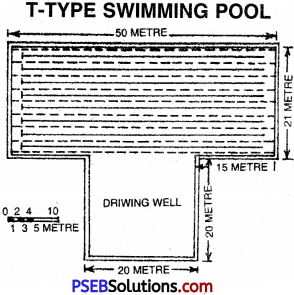
![]()
![]()
